Two ends of an inductor of inductance L is connected to two parallel conducting rails. A conducting wire of length (that is equal to separation between the rails) can slide on the rails without friction. The wire has mass m. It is projected with a velocity v0 parallel to the rails (see Figure). Neglect self inductance and resistance of the loop.
(a) Find velocity of the wire as a function of time.
(b) Write current through the wire at time t.
(c) Find speed of the wire as a function of its displacement.
(d) Is the current in the conductor zero when it stops? If no, find this current .
(e) Will the conductor move after it stops?
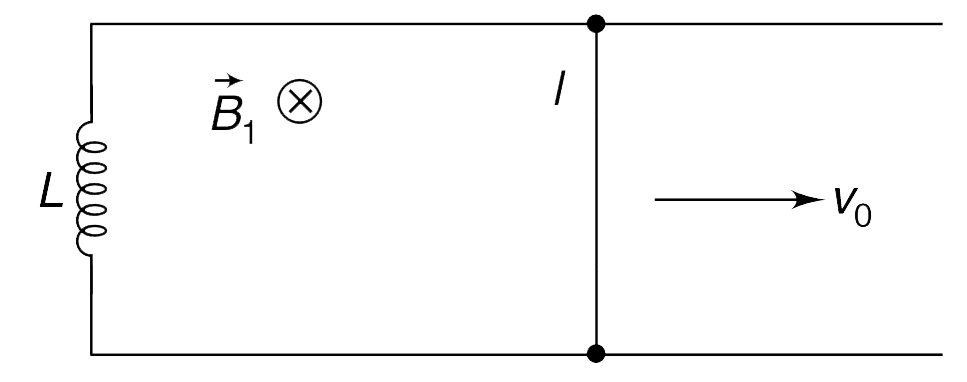
The correct Answer is:(a) v=v0cosωt
(b) i=v0√mLsinωt where ω=Bl√mL
(c) v=√v20−B2l2mLx2
(d) No, v0√mL
(e) Yes
Step by step video, text & image solution for Two ends of an inductor of inductance L is connected to two parallel conducting rails. A conducting wire of length (that is equal to separation between the rails) can slide on the rails without friction. The wire has mass m. It is projected with a velocity v_(0) parallel to the rails (see Figure). Neglect self inductance and resistance of the loop. (a) Find velocity of the wire as a function of time. (b) Write current through the wire at time t. (c) Find speed of the wire as a function of its displacement. (d) Is the current in the conductor zero when it stops? If no, find this current . (e) Will the conductor move after it stops? by Physics experts to help you in doubts & scoring excellent marks in Class 12 exams.
Updated on:21/07/2023Topper's Solved these Questions
- ELECTROMAGNETIC INDUCTIONBook:ARIHANTChapter:ELECTROMAGNETIC INDUCTIONExercise:Level 3
Explore 12 Videos
- ELECTROMAGNETIC INDUCTIONBook:ARIHANTChapter:ELECTROMAGNETIC INDUCTIONExercise:Level 3
Explore 12 Videos
- CURRENT ELECTRICITYBook:ARIHANTChapter:CURRENT ELECTRICITYExercise:Current Electricity
Explore 105 Videos
- ELECTROSTATICSBook:ARIHANTChapter:ELECTROSTATICSExercise:Level 3
Explore 59 Videos
Similar Questions
Figure shows a wire of resistance R sliding on two parallel, conducting fixed thick rails placed at a separation l. A magnetic fild B exist in a direction perpendicular to the plane of the rails. The wire is moving with a constant velocity v. Find current through the wire
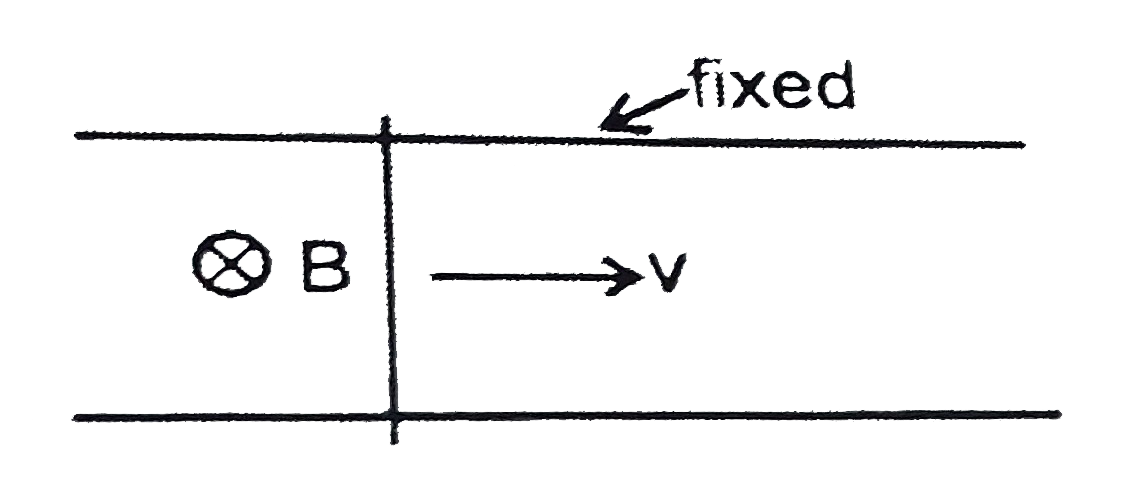
View SolutionTwo parallel conducting rails are separated by a distance L. Two identical conducting wires are placed on the rails perpendicular to them. Each wire has mass M. One of the wires is given a velocity v0 parallel to the rails away from the other wire. There is a uniform magnetic field directed into the plane of the figure everywhere. Answer following questions for the system comprising of two wires. [Ignore friction and self inductance]
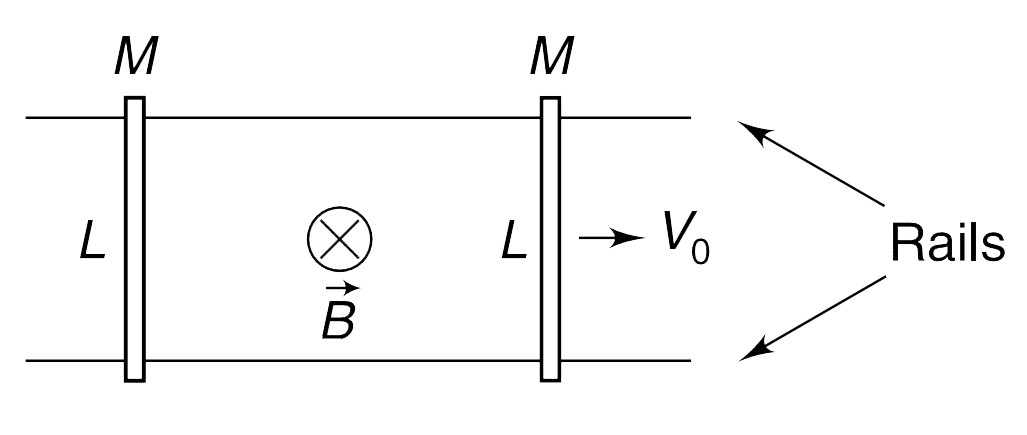
(i) Will the momentum of the system decrease with time?
(ii) What is kinetic energy of the system in steady state?
View Solution
Knowledge Check
Two ends of an inductor of inductance L are connected to two parallel conducting wires. A rod of length l and mass m is given velocity v0 as shown. The whole system is placed in perpendicular magnetic field B. Find the maximum current in the inductor. (Neglect gravity and friction)
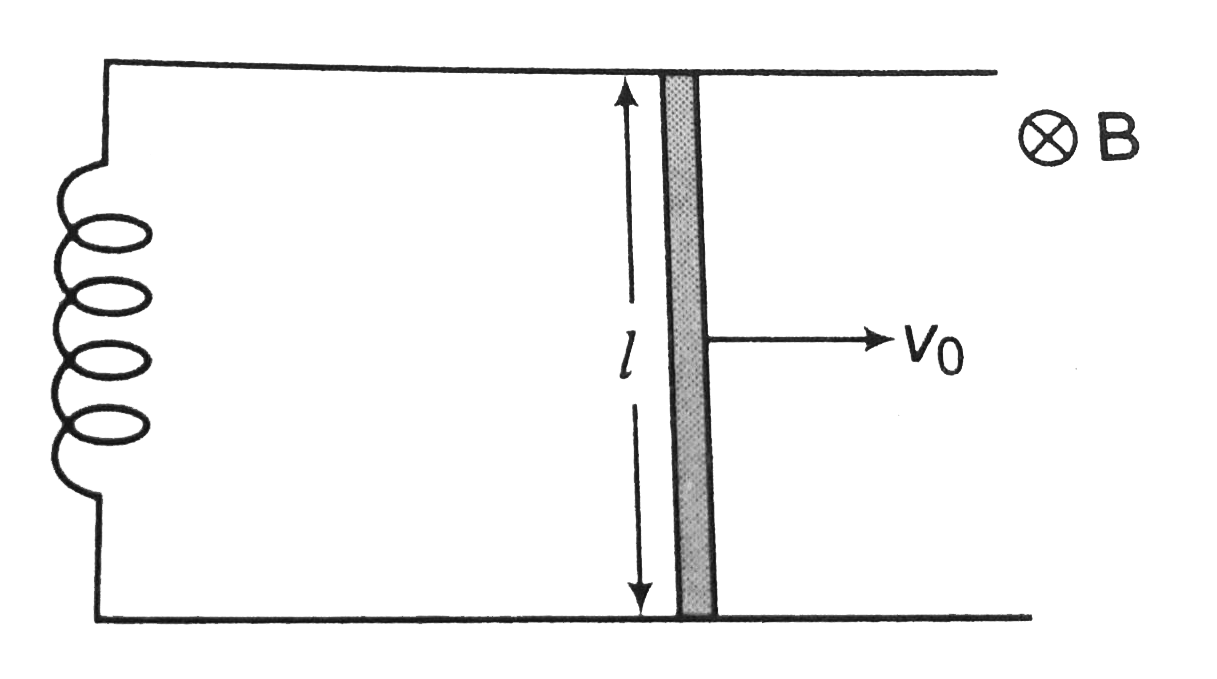 Amv0LB√mLv0Cmv20LDNone of these
Amv0LB√mLv0Cmv20LDNone of theseAs shown in figure, the two parallel conducting rails, in a horizontal plane, are connected at one end by an inductor of inductance L. A slider (metallic) of mass m, is imparted a Velocity v0, upon the rails, as shown in figure. The period of oscillation of the conducting rod is
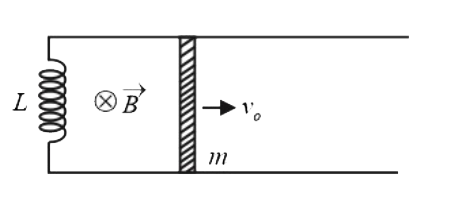 Aπ2√mLBlB2π√mL3BlC2π√mLBlD3π√mL2Bl
Aπ2√mLBlB2π√mL3BlC2π√mLBlD3π√mL2BlA conducting rod PQ of mass m and length l is placed on two long parallel (smooth and conducting) rails connected to a capacitor as shown. The rod PQ is connected to a non conducting spring of spring constant k, which is initially in relaxed state. The entire arrangement is placed in a magnetic feild perpendicular to the plane of figure.
Neglect the resistance of the rails and rod.
Now, the rod is imparted a velocity v0 towards right, then acceleration of the rod as a function of its displacement x given by
 AkxmBkxm+B2l2CCkxm−B2l2CDkxB2l2C
AkxmBkxm+B2l2CCkxm−B2l2CDkxB2l2C
Figure shows a wire sliding on two parallel, conducting rails placed at a separation L . A magnetic field B exists in a direction perpendicular to the plane of the rails. What force is necessary to keep the wire moving at a constant velocity V ?
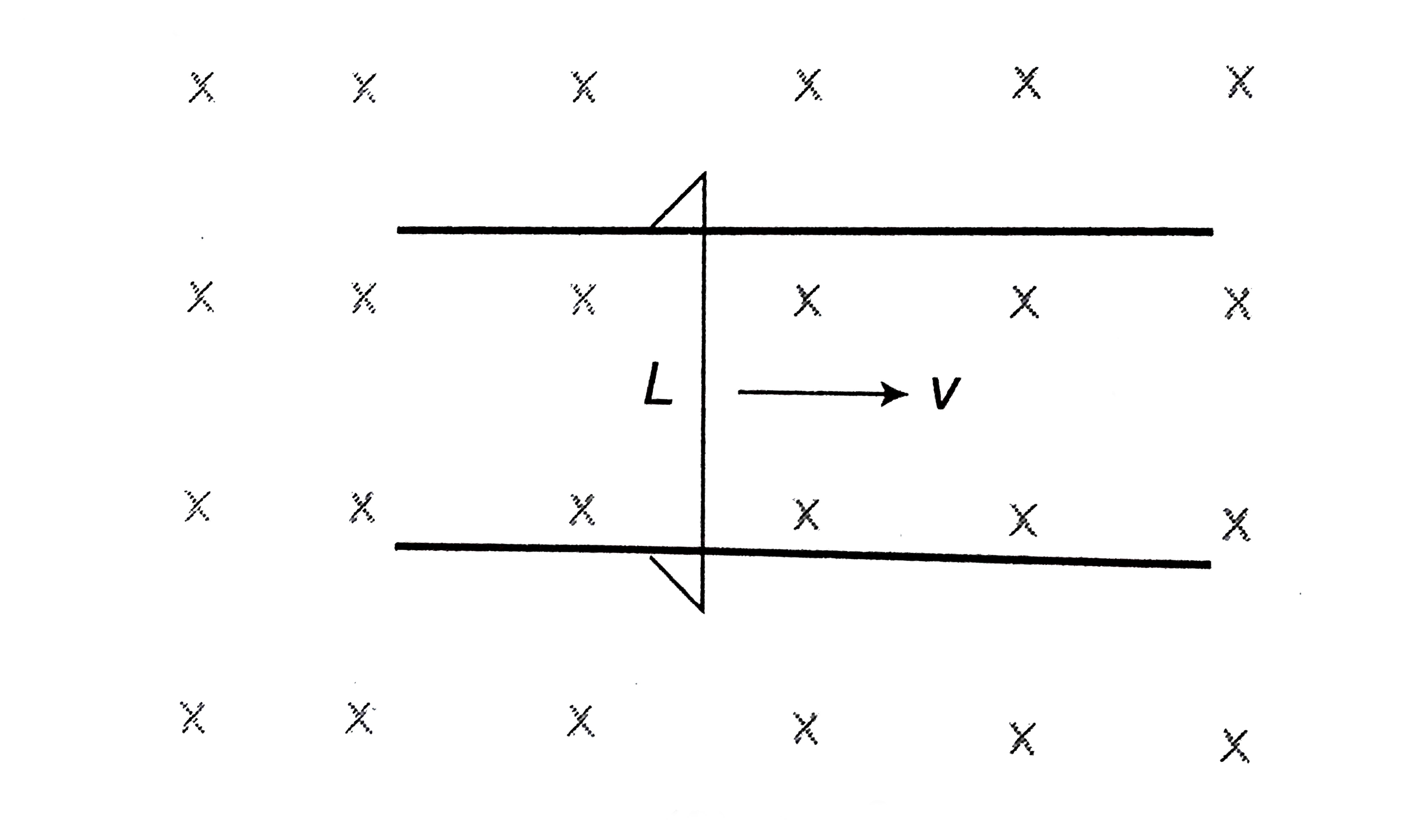
View SolutionA conducting wire of length l and mass m can slide without friction on two parallel rails and is connected to capacitance C. The whole system lies in a magnetic field B and a constant force F is applied to the rod. Then
View SolutionA conducting wire of length l and mass m can slide without friction on two parallel rails and is connected to capacitance C. The whole system lies in amagnetic field B and a constant force F is applied to the rod . Then
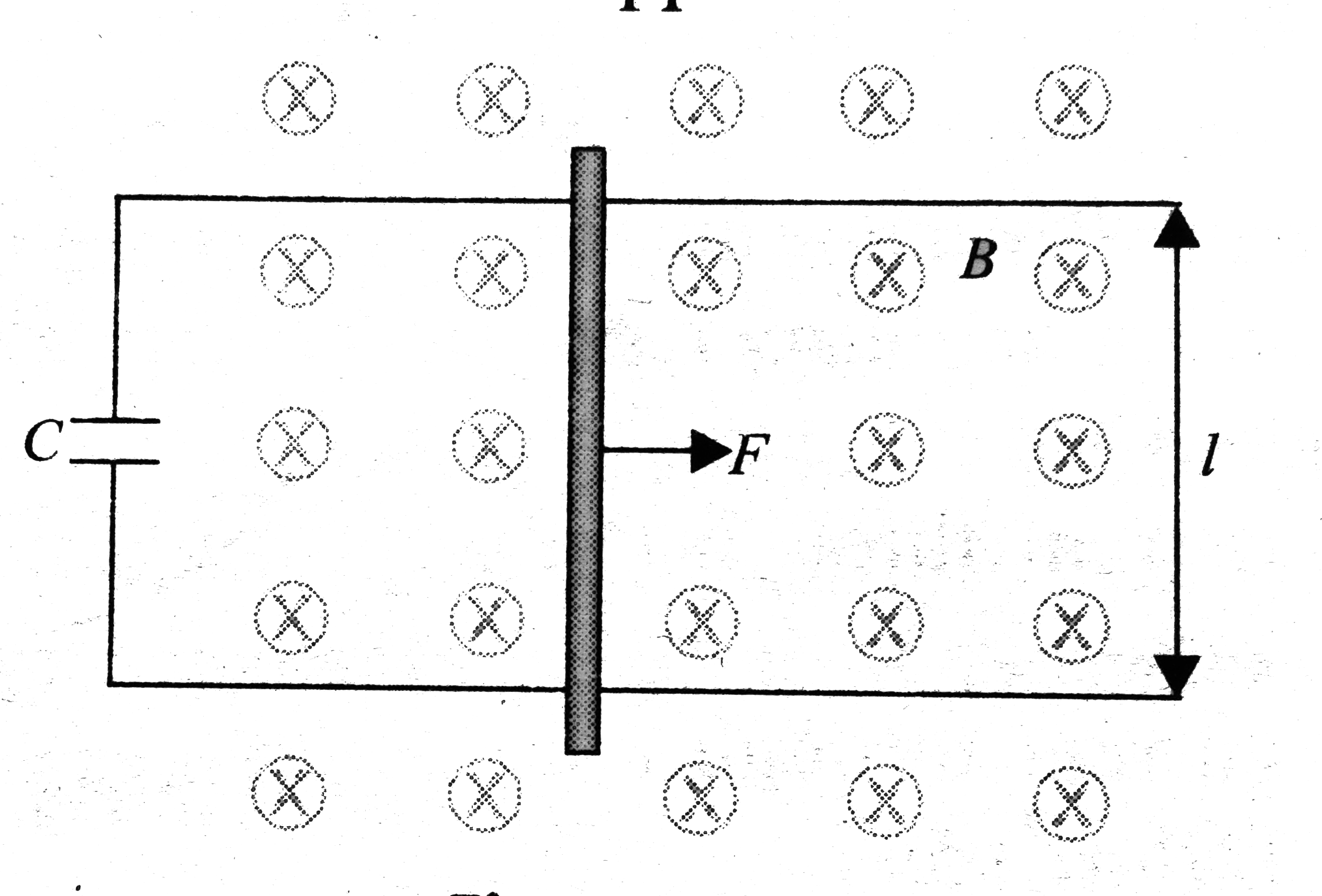
View SolutionA resistance R is connected between the two ends of the parallel smooth conducting rails.A conducting rod lies on these fixed horizontal rails and a uniform constant magnetic field B exists perpendicular to the plane of the rails as shown in the figure.If the rod is given a velocity v and released as shown in figure, it will stop after some time, which option are correct:
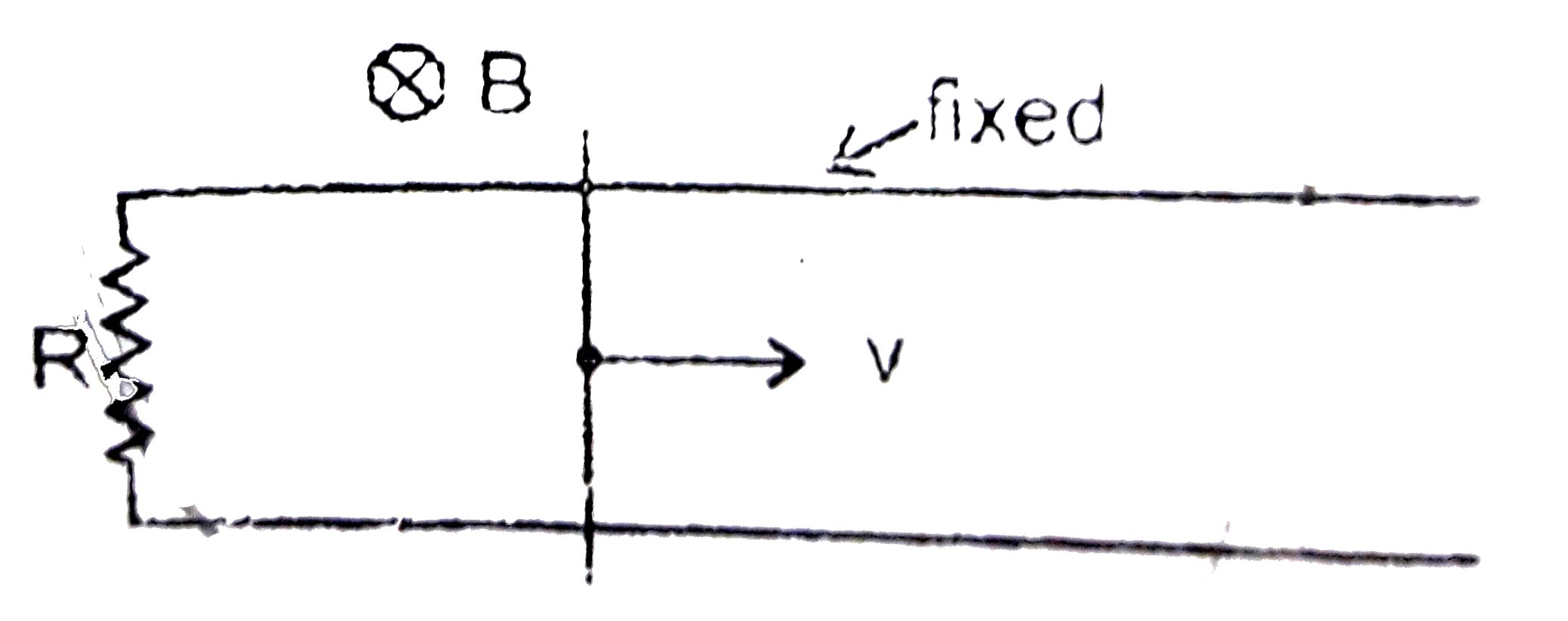
View SolutionConsider parallel conducting rails separated by a distance l. There exists a uniform magnetic field B perpendicular to the plane of the rails as shown in Fig. Two conducting wires each of length l are placed so as to slide on parallel conducting rails. One of the wires is given a velocity v0 parallel to the rails. Till steady state is achieved, loss in kinetic energy of the system is
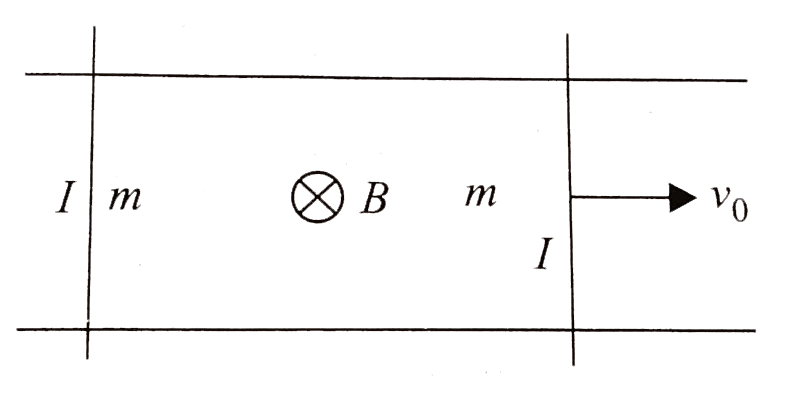
View Solution

